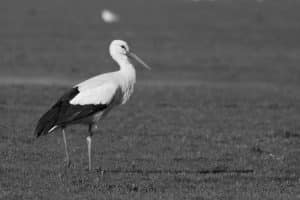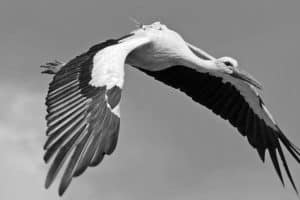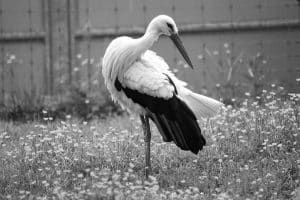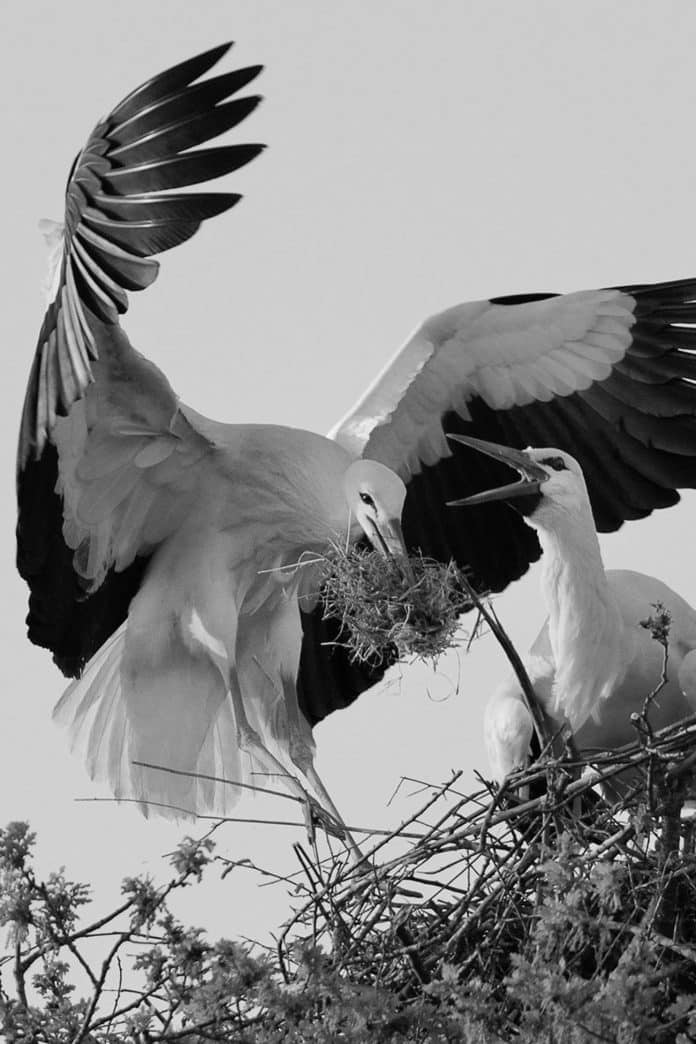Introduction to the majestic white stork
Tanzania, known for its diverse wildlife and breathtaking landscapes, is home to a multitude of fascinating bird species. Among them, the majestic white stork in Tanzania stands out with its elegant appearance and graceful movements. With its long neck, slender body, and striking white plumage, this bird is a true spectacle to behold.
The white stork, scientifically known as Ciconia ciconia, is a large wading bird that belongs to the stork family. It is renowned for its impressive migrations, covering thousands of kilometers each year. In Tanzania, these magnificent birds can be found in various habitats, ranging from wetlands and grasslands to savannas and woodlands.
Habitat and distribution of white storks in Tanzania
White storks are widespread across Tanzania, occupying a variety of habitats throughout the country. They are commonly found in wetlands, such as lakes, rivers, and marshes, where they can easily find their preferred prey of fish, frogs, and insects. These birds are also known to inhabit grasslands and agricultural fields, where they feed on small mammals and reptiles.
The distribution of white storks in Tanzania is influenced by seasonal factors, such as rainfall and food availability. During the wet season, they tend to disperse widely across the country, taking advantage of the abundant food resources. As the dry season approaches, they congregate in larger numbers around remaining water sources, creating impressive spectacles for birdwatchers.
Characteristics and behavior of white storks

White storks are known for their distinctive appearance and fascinating behavior. Standing at an average height of 100 centimeters, they possess a long, slender neck that allows them to reach into the water or tall grasses in search of prey. Their plumage is primarily white, with black flight feathers and a striking red beak and legs.
These birds have a unique way of flying, soaring effortlessly on thermal currents with outstretched wings. Their flight is characterized by slow, steady wingbeats, which give them an air of gracefulness. When it comes to nesting, white storks are renowned for their large stick nests, often built on trees, cliffs, or man-made structures such as chimneys and electric poles.
Best time and locations to spot white storks in Tanzania
To maximize your chances of spotting white storks in Tanzania, it is important to visit during the appropriate time of year and choose the right locations. The best time to observe these birds is during the dry season, from June to October, when they gather in larger numbers around remaining water sources.
Some of the top locations for white stork sightings in Tanzania include the Serengeti National Park, Lake Manyara National Park, and the Ngorongoro Conservation Area. These areas offer a combination of wetlands, grasslands, and water bodies, providing ideal habitats for the birds. Additionally, the Tarangire National Park and the Selous Game Reserve are also known for occasional white stork sightings.
Birdwatching essentials for spotting white storks
When embarking on a birdwatching adventure to spot white storks in Tanzania, it is essential to come prepared with the right equipment and knowledge. Firstly, a pair of binoculars will greatly enhance your birdwatching experience, allowing you to observe the intricate details of the storks from a distance.
Secondly, a field guidebook specific to African birds will prove invaluable in identifying various species, including the white stork. It will provide you with detailed descriptions, distribution maps, and illustrations to assist in accurate identification.
Lastly, don’t forget to dress appropriately for the Tanzanian climate, as birdwatching often involves spending extended periods of time outdoors. Wearing lightweight, breathable clothing, a hat, and sunscreen will protect you from the sun’s rays and keep you comfortable throughout your expedition.
Tips for increasing your chances of spotting white storks

While white storks can be found in various locations across Tanzania, there are some tips that can increase your chances of spotting these magnificent birds. Firstly, try to plan your birdwatching activities during the early morning or late afternoon, as this is when the storks are most active and visible.
Additionally, look for areas with suitable feeding grounds, such as wetlands or agricultural fields, as these are likely to attract white storks in search of food. Pay attention to their distinctive call, a loud clattering sound, which can help locate them even before they come into view.
Lastly, patience is key. Birdwatching requires a calm and patient approach, as storks may take their time to appear or come within close proximity. Take the time to observe their behavior and movements, and you will be rewarded with a memorable sighting.
Conservation efforts for white storks in Tanzania
As with many bird species around the world, the white stork faces various conservation challenges in Tanzania. Habitat loss and degradation, caused by factors such as deforestation and agricultural expansion, pose a threat to their long-term survival. Climate change and pollution also have negative impacts on their habitats and food sources.
To address these challenges, various conservation organizations and government agencies are working together to protect and conserve the white stork populations in Tanzania. Efforts include the establishment of protected areas, conservation education programs, and research initiatives to better understand their behavior and migration patterns.
Other bird species you may encounter while searching for white storks
While on your quest to spot white storks in Tanzania, you may come across a multitude of other fascinating bird species. Tanzania is renowned for its rich avian diversity, with over 1,000 bird species recorded within its borders. Some of the notable species you may encounter include the African fish eagle, flamingos, secretary birds, and various species of herons and egrets.
These birds offer a mesmerizing display of colors, behaviors, and adaptations, adding to the overall birdwatching experience in Tanzania. Keep your eyes and ears open, as you never know what feathered surprise may cross your path.
White stork photography tips
For those keen on capturing the beauty of white storks through the lens of a camera, here are some photography tips to enhance your chances of success. Firstly, invest in a telephoto lens with a focal length of at least 300mm to get close-up shots of the storks without disturbing their natural behavior.
Secondly, pay attention to lighting conditions. The golden hours of early morning and late afternoon provide warm, soft light that can enhance the beauty of the birds and their surroundings. Avoid harsh midday sunlight, which can create unflattering shadows and wash out details.
Lastly, experiment with different angles and compositions to capture unique perspectives of the white storks. Focus on their distinctive features, such as their beaks, eyes, and intricate plumage patterns. Patience and persistence are key in capturing the perfect shot.
Conclusion: The beauty and significance of the white stork in Tanzania

In conclusion, the white stork is a truly magnificent bird that adds to the spectacular wildlife of Tanzania. Its graceful appearance, impressive migrations, and fascinating behaviors make it a sought-after species for birdwatchers and nature enthusiasts. By following the tips and guidelines provided in this guide, you can increase your chances of spotting and appreciating these majestic birds in their natural habitats.


































